This is the 4th article in a continuing series on Morocco.
Today we’re in Chefchaouen, a city in northwest Morocco, with a 2024 population listed at 46,200. It’s especially noted for its blue buildings. Dave, is that what brought you here?
Dave Letts: As a camera aficionado, the blue of Chefchaouen is a photographer’s dream and makes visiting the town a lot of fun. It is a standard stop in any Morocco tour.
The mosque is in the center square and the calls to prayer are throughout the day and night.
There are lots of shops and artisans looking to sell you something. Within the town is a small Kasbah fortress built in the 15th and 16th century to defend against the Portuguese. Well worth exploring and in the center of the old part of town.
Sounds great Dave! Let’s talk for a minute about lodging in Morocco. What type of place did you stay there? Can you explain about Riads or other lodging options?
Dar & Riad, Modern Tourist Accommodations With a Fascinating Past
Above: Entrance to the Casa Tajeddine Riad.
Dave: Our stays were often in a riad, Here in Chefchaouen we stayed at Casa Tajeddine, pictured in these photos.
This is a Moroccan style home that has a courtyard or center garden area.
The proprietors of the riads we stayed in clearly have spent a significant amount of money keeping these older structures beautiful and interesting to explore. I would highly recommend when planning a trip to Morocco, to go the riad route in lodging. I add that they are pretty affordable. I can honestly say that my experience in Morocco was amplified by the service, friendliness, and uniqueness of these riads.
Sue, anything to add on lodging options?
As David said, modern dars/riads are large, lavishly (and lovingly) restored old residences. What I write here is a compilation of explanations from our driver, a number of local guides, and a book “Dreams of Trespass” by Fatima Mernissi.
In terms of words, dar just means ‘house’ and riad just means ‘garden’. What we see as modern guests is a complicated blending of these two concepts now used to describe a relative difference in both the history and the original use of the buildings. The easiest way to think about it now is that guesthouse dars are smaller traditional 2-3 story buildings, still with a modest center courtyard and at leas a fountain and some potted plants, while riads are generally much larger, often taller, traditional buildings with a larger courtyard, in-ground garden plants, and often multiple water features such as fountains. Today dars were likely to have been built for a single family, with several generations living together, and room for visitors and a few needy relatives).
The riads were most likely built (or renovated) to accommodate extended families, meaning a wealthy father and wives (yes, plural), his minor children and often the families of several sons. Each family line likely had one of the four sides of the riad around the courtyard, or at least a big part of one floor, with the courtyard being ‘shared-use’. Sometimes a set of brothers would renovate a large older courtyard building and each take a side for their growing families.
Dars had at least 2 upper floors opening onto the courtyard, with a roof terrace, while most riads had 3 to 4 upper floor levels with roof terrace, each floor opening onto the large inner courtyard. Today the difference between a dar and riad when used in naming a guesthouse in the modern Moroccan tourist industry, may not amount to much. Just like all of Morocco, it’s complicated, but always gorgeous and a delight to all the senses.
Great! OK, we’ve checked into our dar or riad, let’s check out the streets of Chefchaouen
Dave: Walking down the streets and alleyways of Chefchaouen is like wearing a blue filter set of glasses. Everything is blue. I have never experienced anything like this town. While the blueness is almost startling, I will simply add that the structures and streets are also quite unique and fun to explore.
I personally spent a lot of time in the early morning discovering sites before the city awakened. Quiet and beautiful in its’ own way, it becomes obvious why the town is a tourist attraction.
Thanks Dave. Awesome pictures! Let’s cover some of the basics.
Chefchaoen is situated in a mountainous region in northern Morocco, in the western Rif. The city was founded in 1471 by Moulay Ali Ben Rachid, a distant descendant of the prophet Muhammad.
The Kasbah was built here to defend the land from attacks of the Portuguese. Many Jews and Muslims from the Iberian Peninsula settled here during and after the Reconquista. Some believe they are the ones who brought the tradition of painting their homes blue, to remind them of their old homes in Andalusia.
The blue is said to symbolize the sky and heaven and serve as a reminder to lead a spiritual life. Then, because the blue was so popular, the local authorities passed a law requiring that houses be painted blue in the 1970s to attract tourists.
The name "Chefchaouen" is derived from the Arabic word “Chef” meaning “to look” and “Chaouen,” meaning “antlers” or “horns.” So the city’s name means “To lookout between the horns,” keeping a lookout between the two protective horns of the looming Rif Mountains.
Today Chefchaouen is known as "the Blue Pearl" of Morocco, because of the tradition of painting houses blue and white.
Dave continues: What to do in the town? In addition to visiting the kasbah, the town is a labyrinth of quaint alleyways and markets to explore. I consider it a relaxing experience. Streets are fairly barren of any vehicles in the old part of town.
While it certainly is touristy, I found it to be authentic due to its’ architectural look and cultural feel. The people were friendly. I’ll add that while getting a drink outside a riad is difficult, we found a quaint bar that served Moroccan beer. My overall assessment is that the town is a fun stop over for a full day or two.
Sue:
David gave you the perfect shots of the stunning blue street scenes. We stayed in a unique very large dar named Dar Jasmine sited high upon a hill above the city.
Our driver could pull up to the entrance gate of this dar, and we had porters to help with the luggage up a very long climb up to our room.
Many have gorgeous entry doors. Our room was huge with bedroom area as well as a large sitting area.
Our reward for the hard climb that we made 2-3 times a day for 2 days was the most stunning view possible, day and night.
David Z: Thanks for these great descriptions Sue, I’m so sorry I was unable to download your photos in time for the post today. These are all pics from Dave, of course.
That’s going to wrap it up for Chefchaouen. Thanks so much everyone for traveling along with us, and a special thanks to our guest authors.
Are you in to Blue? For further exploration of the color blue, check out this interesting recent post by Sabrina Y. Smith.









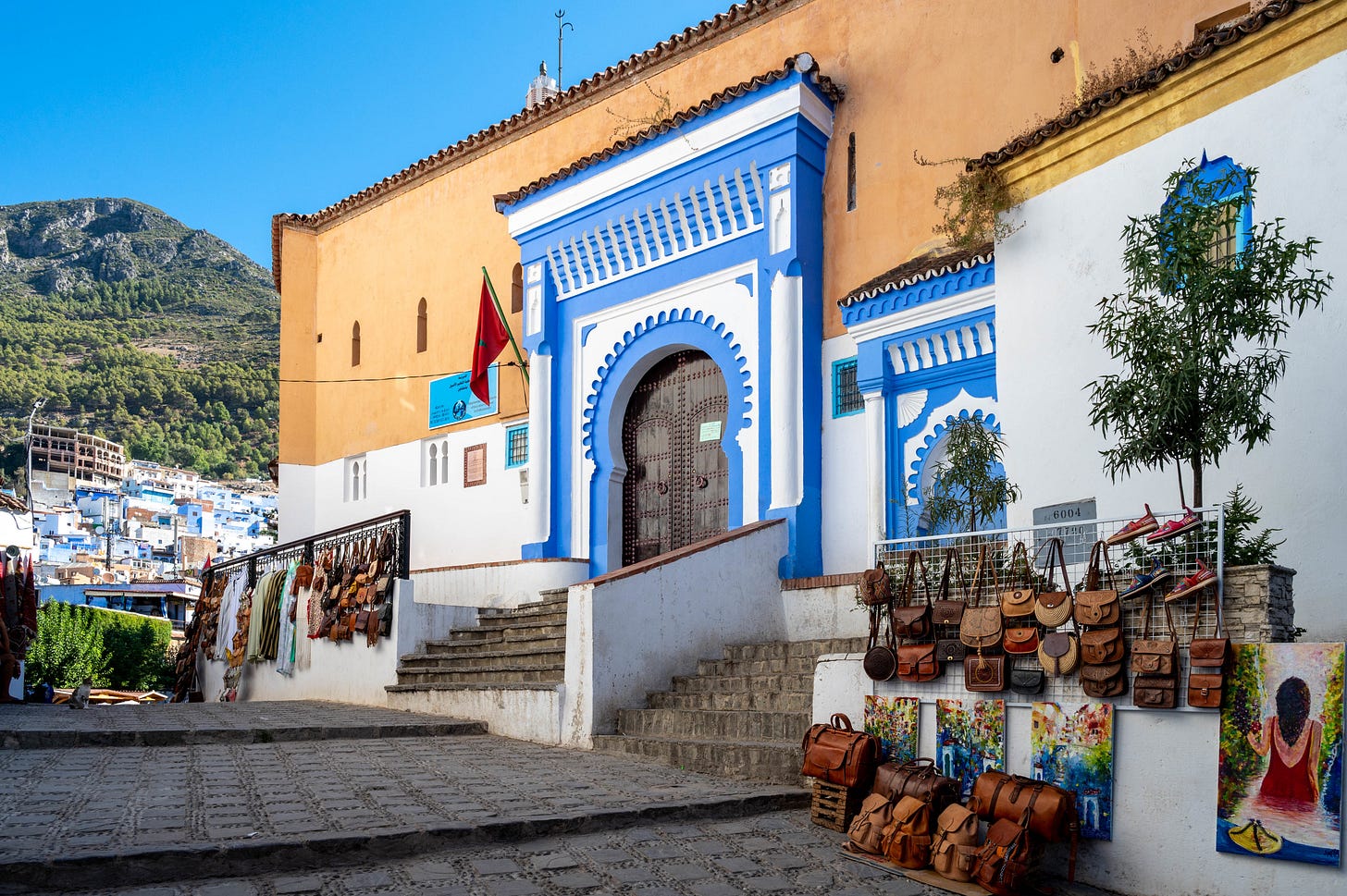

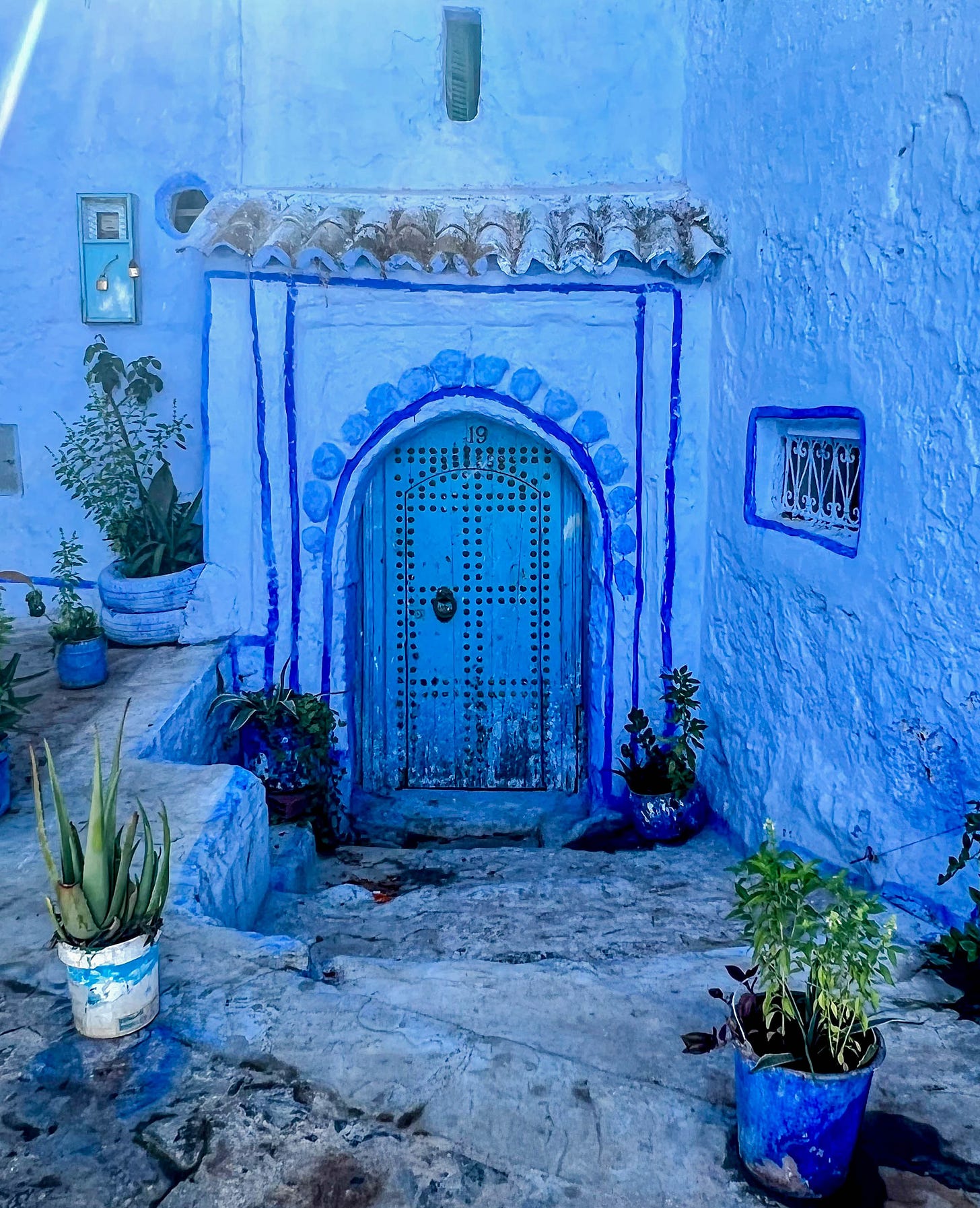
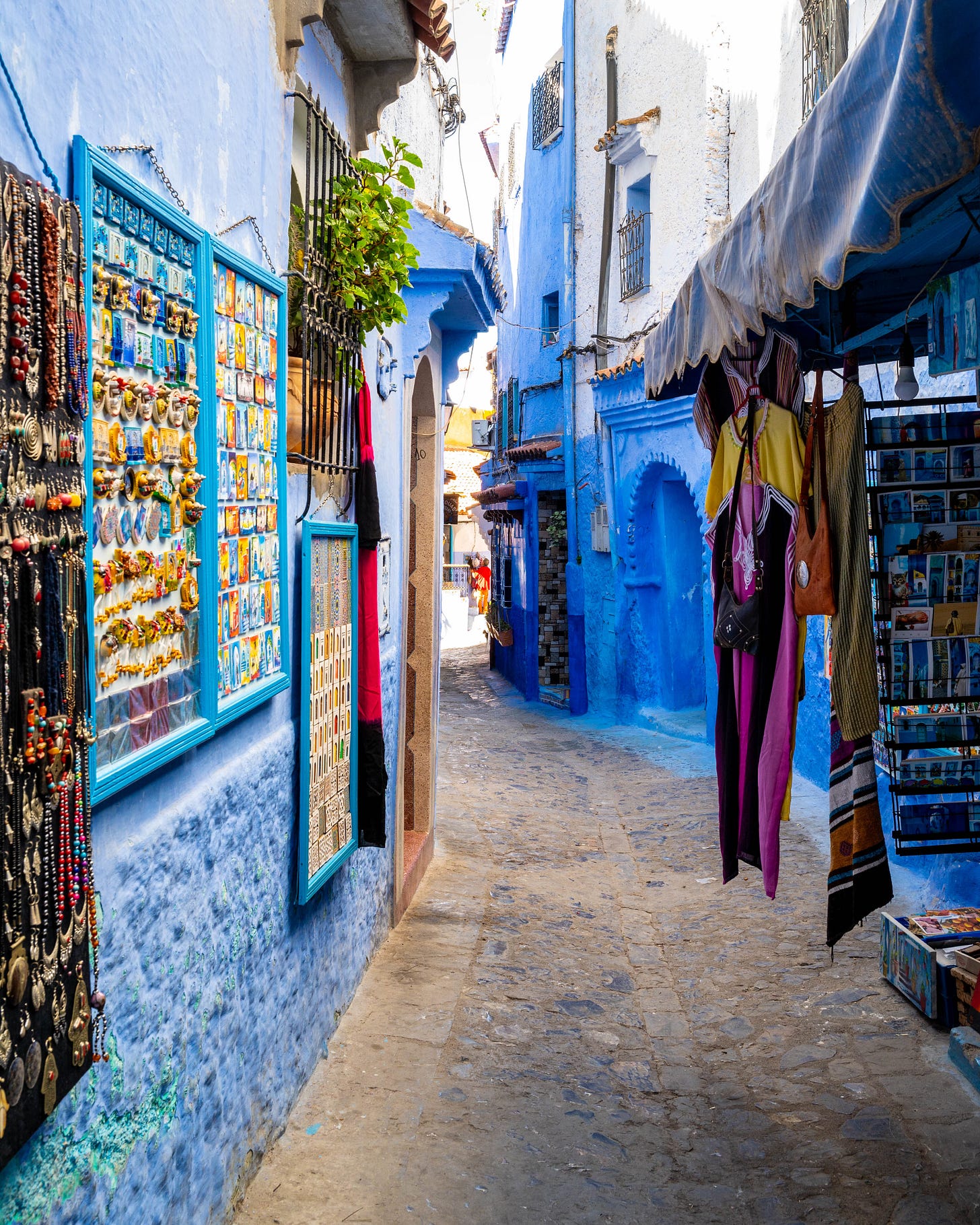

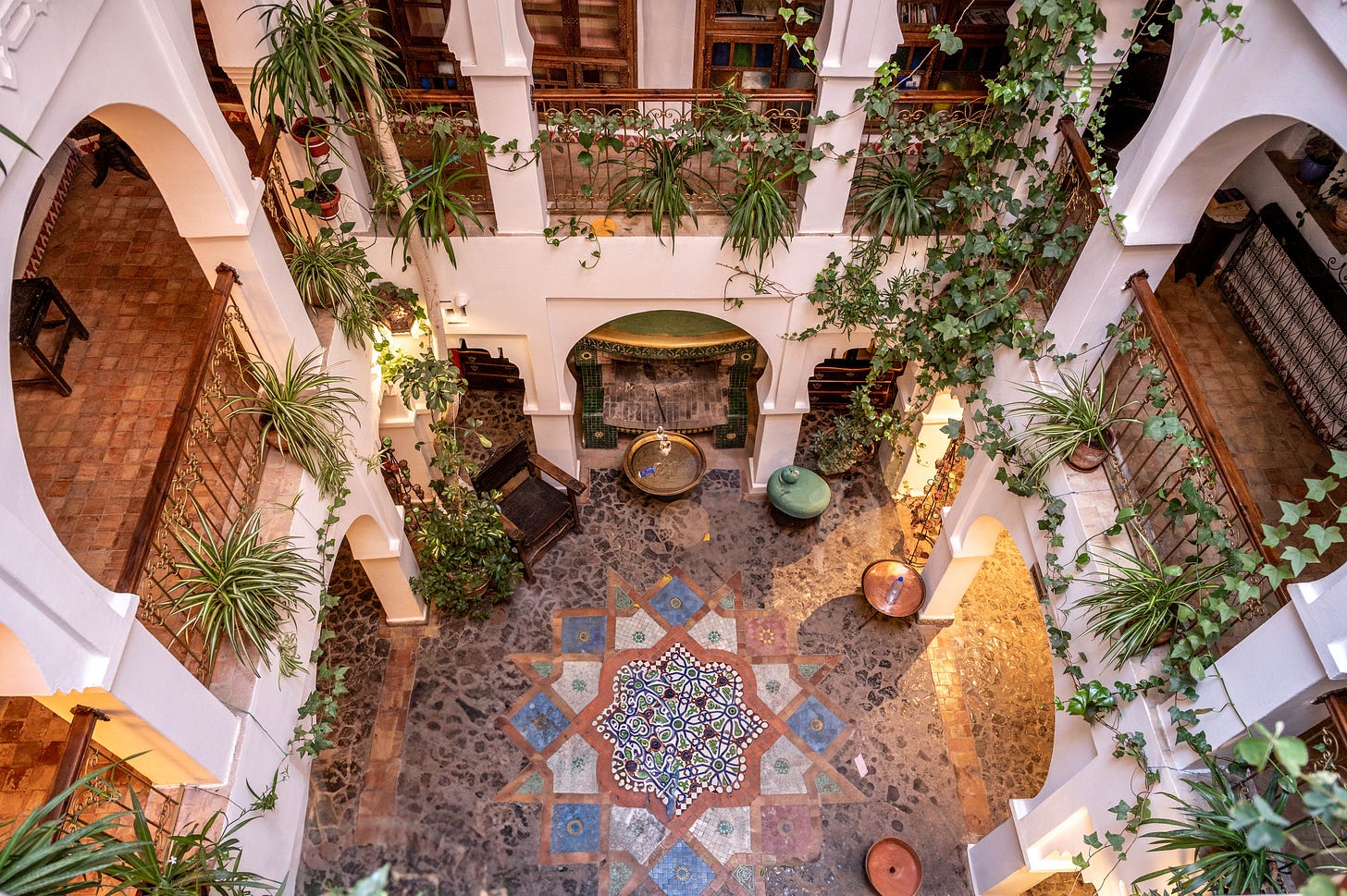
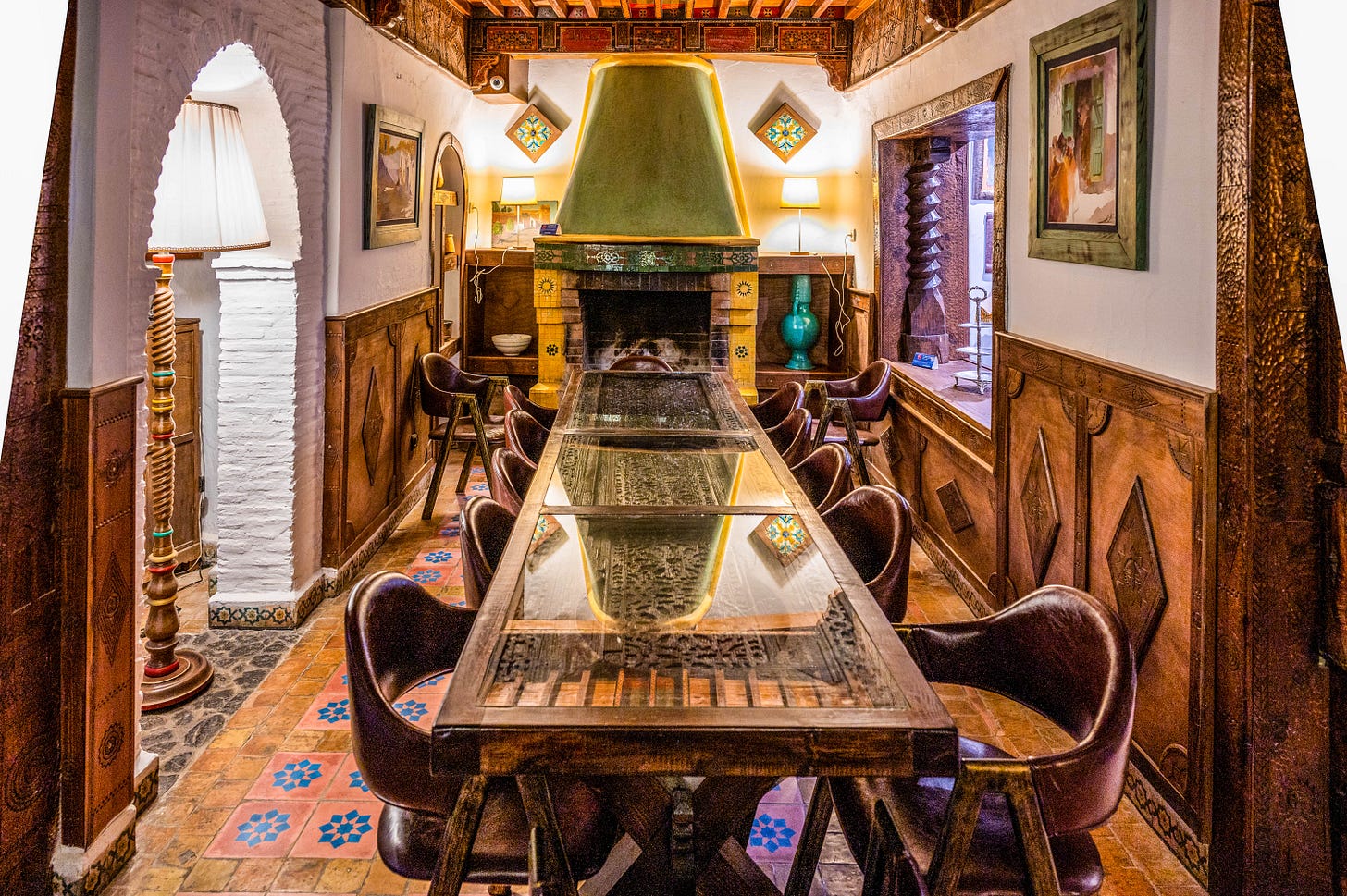




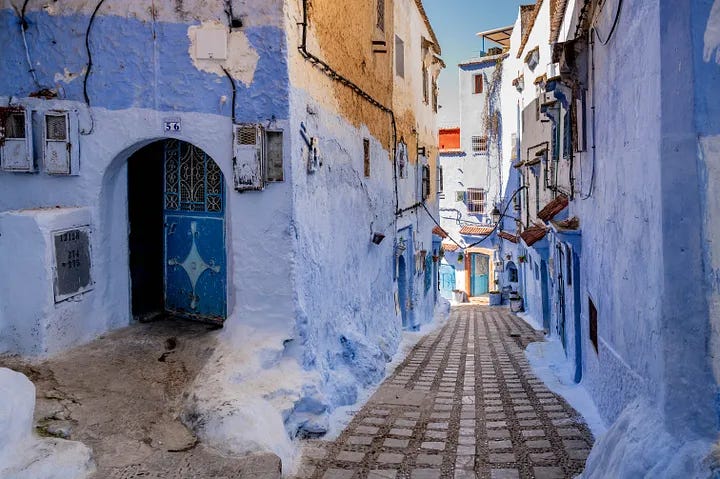

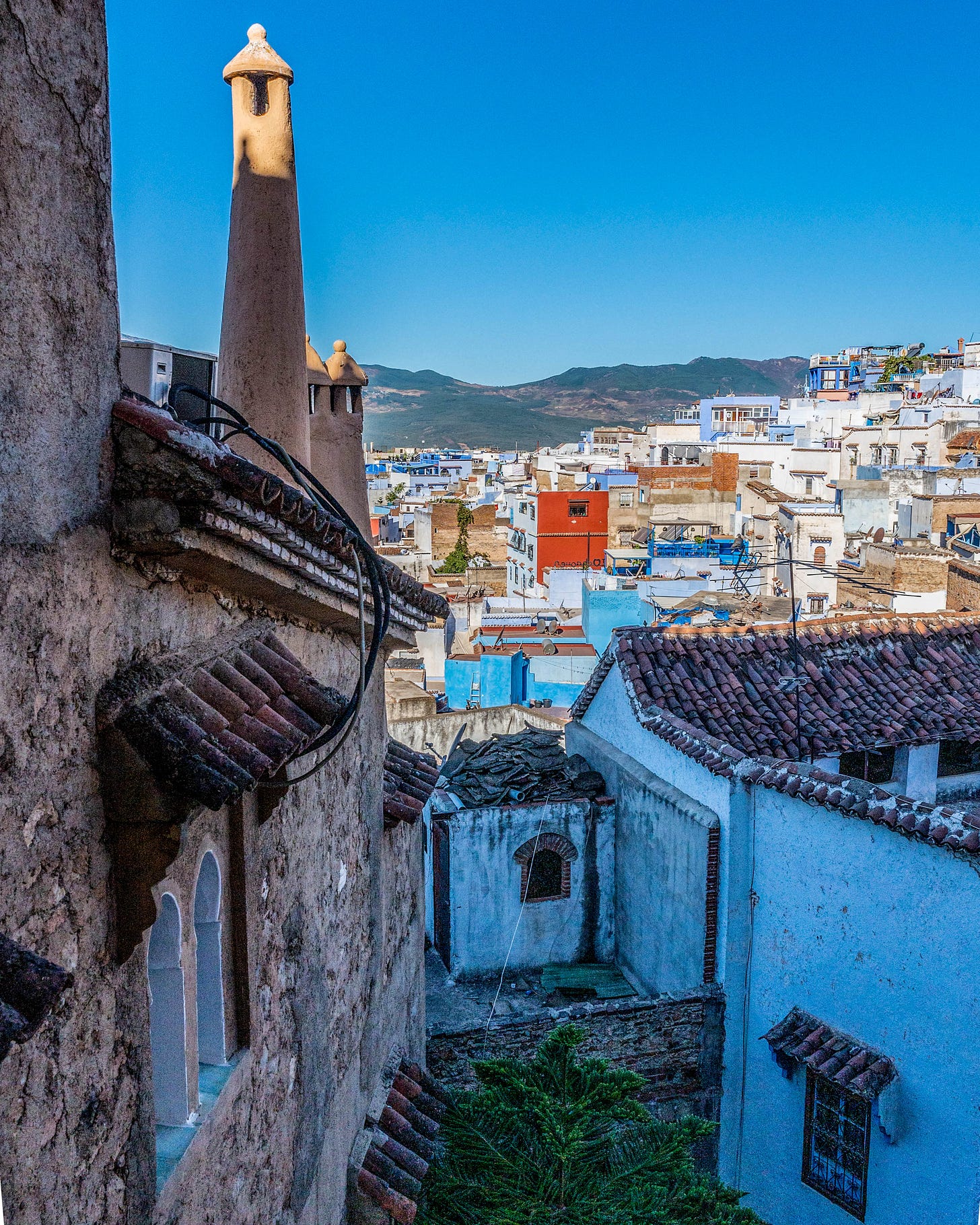


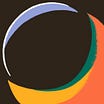
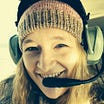

The contrast of the blue and white walls in the brilliant Mediterranean sunlight is stunning. It delights the eye and pulls one's attention to the many textures of the tiles, mosaics, plants, wooden doors and trims ... everything. Blue is the color of our planet from outer space. Here it reflects the deep ocean and sky, the vastness broken into pieces by the shapes of the buildings. An artistic miracle. I love it. And Dave's photos do it justice. Thank you.
Wow😮